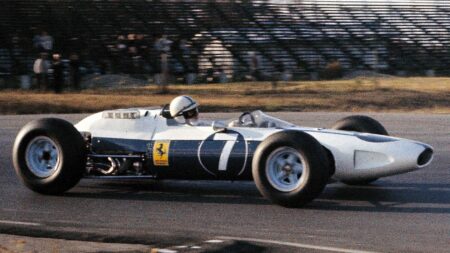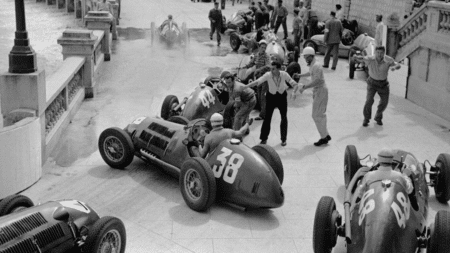Mercedes has made a habit of winning over the years, and in dominant fashion. It did so in the 1930s, again in the ’50s, then the ‘80s/early ‘90s and most recently with Lewis Hamilton and Nico Rosberg last year. And although its recent success took a number of years to gather pace it looks likely to continue for the immediate future.

Hamilton already has one hand on the 2015 drivers’ crown and the constructors’ championship seems unlikely to leave the three-pointed star; even a resurgent Ferrari is not enough to halt the ever-expanding trophy cabinet in Brackley. There have been calls in the paddock for rule changes, for equalisation, for anything that will peg back the advantage enjoyed by Mercedes. This was not an attitude that prevailed in the ’50s and one which, I hope, will not prevail in 2015.

Wind back the years to ’54 and for the first time since the Second World War, Mercedes-Benz returned to top level motor racing. Despite a significant budget, its closed-wheeled and very beautiful W196 failed to make an appearance until the third round of the championship at Reims.
Lead driver Juan Manuel Fangio started the season in a Maserati 250F, winning the Argentine and Belgian Grands Prix. Moving to Mercedes for the race in France, he scored his third consecutive win and Mercedes’ first of the Formula 1 era. Team-mate Karl Kling finished second. Of the remaining five races, Fangio won three, only failing to make the podium on one occasion.
Mercedes proceeded in dominant fashion in 1955, having added Stirling Moss to its stable of drivers. The team won all but two rounds of the season, its achievements overshadowed by Pierre Levegh’s crash at Le Mans, tragically killing over 80 spectators. Mercedes withdrew from the sport at the end of the year, abruptly ending a period of immense success. Even so, had the team continued, its performance would not have been artificially sterilised in order to produce more competitive racing.
Mercedes’ return to Formula 1 in ‘54 happily coincided with the launch of its new road going sports car, the 300SL. The SL (Sport Leicht) was itself based on a racing car with significant pedigree – the W194 – a Le Mans-winning Mercedes coupé boasting a tubular chassis and a front-mounted 3.0-litre, straight-six engine.

Ironically, the 300SL utilised a more powerful version of the W194’s race motor, producing in excess of 210bhp, over 35bhp more than its race-bred sibling. A move from carburettors to direct fuel injection was largely responsible for the horsepower hike. Despite the race car’s power deficiency, its lightweight construction and low-drag form enabled on-track success. The car’s lack of mass can be largely attributed to the tubular chassis, a feature relatively uncommon on the grids of the ’50s. The design robbed kilograms and added rigidity but also resulted in extremely high sills, an obstacle solved by the design feature now synonymous with the 300SL – gullwing doors.
Ascot based Talacrest advertises its example accordingly – the ‘Mercedes-Benz 300SL Gullwing’. With its silver paintwork, bulging wheels and the gently curving, extruding arches, this Gullwing looks precisely as good as it did 60 years ago and that is to say, very good indeed. The odometer reads just under 60,000 miles and sits encased in a smart red interior. As with the majority of 300SLs which were predominately sold in the US, this example is left-hand drive. The price is unlisted but do not expect much change (if any) from a six figure sum.
I wonder if Mercedes’ reigning champ has added a 300SL to his collection?







